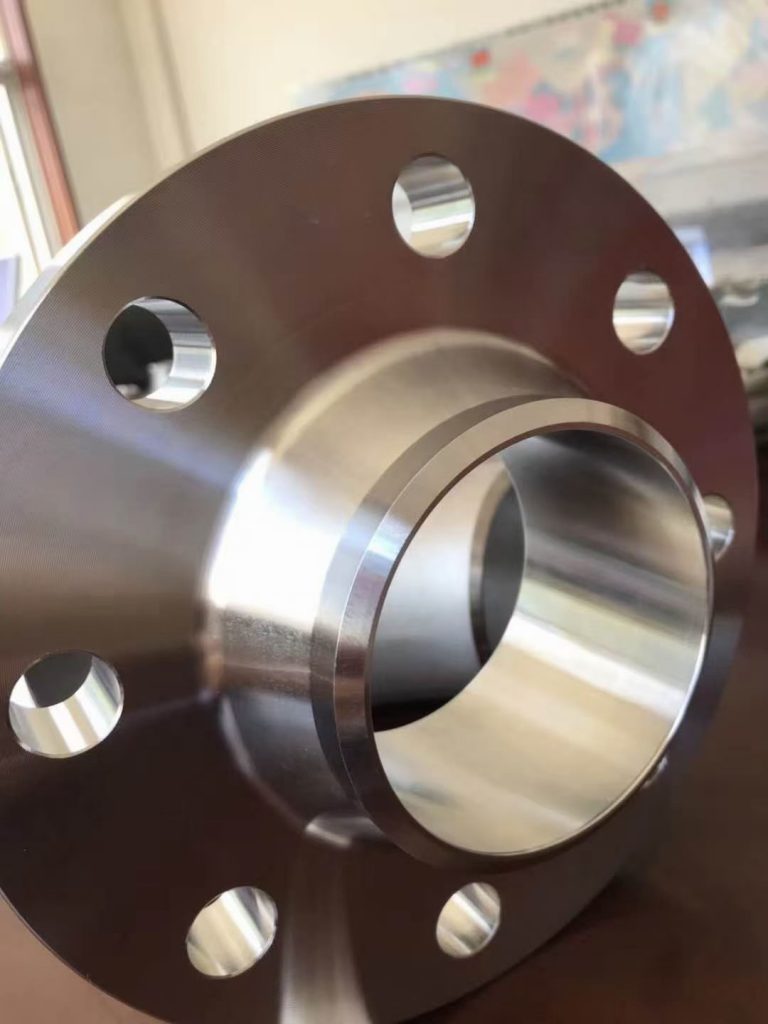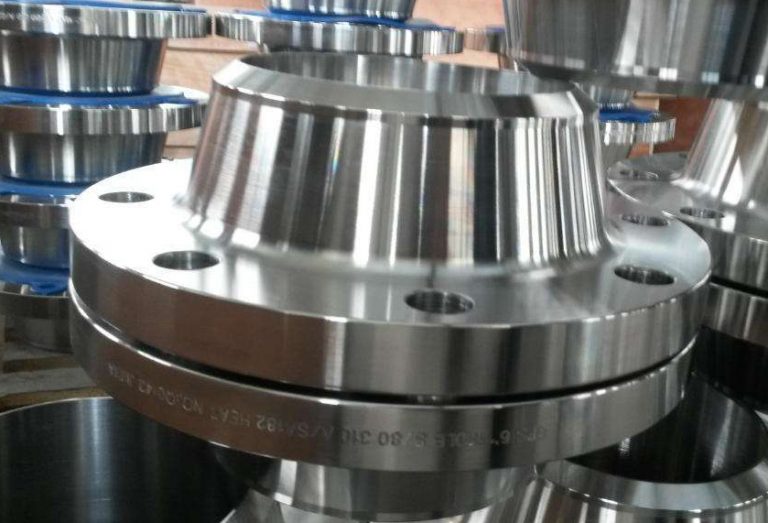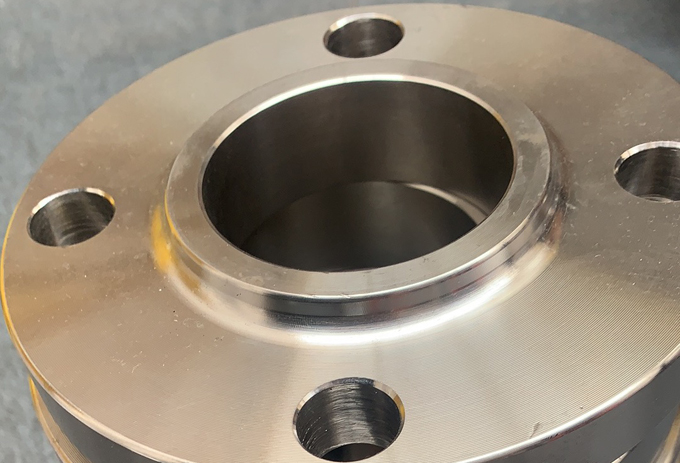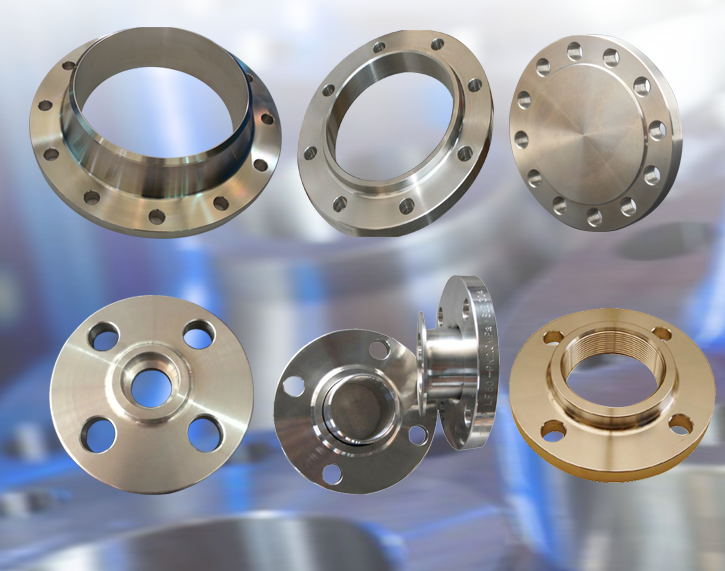Introduction
Flange sizing plays a critical role in the functionality and safety of pipeline systems. As a leading manufacturer in the industry, Yanhao Pipeline Equipment Co., Ltd. (Yanhao) understands the importance of providing high-quality flange products that meet international standards. In this blog post, we will delve into the world of flange sizing, discussing industry standards and their application. With our expertise and commitment to customer satisfaction, we aim to navigate the complexities of flange sizing, ensuring the optimal performance and reliability of pipeline connections.
At Yanhao, we have established ourselves as a trusted name in the field of flange manufacturing. With our state-of-the-art production facilities and a team of experienced engineers, we have the capability to produce flanges that meet various international standards, including American, German, Japanese, and non-standard products. Our commitment to quality and adherence to stringent quality control procedures guarantee that our flanges not only meet but exceed industry standards.
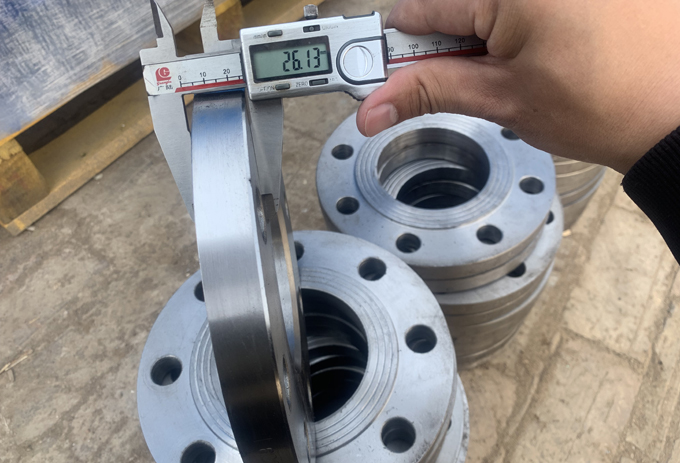
Flange sizing involves understanding different types of flanges, selecting the appropriate size for specific applications, and adhering to industry standards and specifications. In this blog, we will provide comprehensive insights into these aspects, empowering you to make informed decisions when it comes to flange sizing. We will also highlight the expertise and capabilities of Yanhao in providing customized flange solutions that cater to your unique requirements.
Through real-life examples and success stories, we will showcase the wide range of industries that benefit from Yanhao’s high-quality flanges, such as oil and gas, chemical, power, and more. By the end of this blog, we hope to equip you with the knowledge and understanding necessary to navigate the complexities of flange sizing, ensuring efficient and reliable pipeline connections.
Join us as we explore the world of flange sizing and discover how Yanhao’s expertise and commitment to quality can elevate your pipeline systems to new heights of performance and reliability. Let’s dive into the intricacies of flange sizing, understanding industry standards and their practical application.
Understanding Flange Types and Sizes
Flanges are essential components in pipeline systems, providing connections between pipes and equipment such as valves, pumps, and vessels. They come in various types, each designed for specific applications and operating conditions. It is important to select the correct flange type and size to ensure optimal performance and safety in pipeline systems.
- Different Types of Flanges:
- Weld Neck Flanges: These are the most commonly used flanges. They have a long tapered hub that strengthens the connection and provides excellent resistance to high pressure and temperature.
- Slip-On Flanges: These flanges slide over the pipe and are then welded in place. They are popular due to their ease of installation and cost-effectiveness.
- Blind Flanges: Used to close off the end of a pipe or vessel, blind flanges are solid and non-porous. They are primarily used for hydrostatic testing or as a positive isolation device.
- Socket Weld Flanges: Similar to slip-on flanges, socket weld flanges have a socket for the pipe to fit into. They are commonly used for small-diameter, high-pressure applications.
- Lap Joint Flanges: These flanges are used in combination with stub ends to create a detachable joint, allowing for quick and easy disassembly.
2. Importance of Selecting the Correct Flange Size:
Choosing the correct flange size is crucial to ensure proper sealing, alignment, and overall performance of the pipeline system. An undersized flange may lead to leaks, loss of pressure, and compromised system integrity. On the other hand, an oversized flange can result in excessive weight, reduced flow capacity, and increased stress on the pipeline. It is essential to consider factors such as operating conditions, pressure rating, and pipe dimensions when selecting the appropriate flange size.
3. Industry Standards and Specifications:
To promote consistency and reliability, flange sizes are governed by industry standards and specifications. These standards define the dimensions, materials, and testing requirements for flanges. Some commonly used international standards include:
- ASME/ANSI B16.5: This standard applies to flanges used in North America, and it provides dimensional and material requirements for flanges from 1/2″ to 24″ in size.
- EN 1092: This European standard covers a wide range of flange sizes and classes, ensuring compatibility and interchangeability between different manufacturers.
- JIS B2220: This Japanese standard specifies the dimensions, materials, and test methods for flanges used in piping systems, ensuring uniformity and reliability.
By adhering to these industry standards, manufacturers like Yanhao ensure that their flanges meet the requirements of various applications and can be easily integrated into existing pipeline systems.
In the next section, we will delve into the industry standards for flange sizing, discussing the parameters, terminology, and capabilities of Yanhao in producing flanges according to international standards.
Industry Standards for Flange Sizing
When it comes to flange sizing, international standards play a crucial role in ensuring compatibility and interchangeability between different manufacturers. Here are some commonly used international standards for flange dimensions:
- ASME/ANSI B16.5:
The ASME/ANSI B16.5 standard is widely adopted in North America for flanges up to 24″ in size. It provides dimensional requirements, pressure-temperature ratings, and material specifications for various flange types. The standard includes classes ranging from 150 to 2500, indicating the pressure ratings of the flanges. - EN 1092:
The EN 1092 standard is a European standard that covers a wide range of flange sizes and classes. It ensures conformity and interchangeability of flanges manufactured by different suppliers. EN 1092 includes various flange types and nominal pressure classes from PN 2.5 to PN 400, representing the pressure rating of the flanges. - JIS B2220:
JIS B2220 is a Japanese standard that specifies the dimensions, materials, and test methods for flanges used in piping systems. This standard includes various flange types and pressure classes ranging from 5K to 63K, indicating the pressure ratings in kgf/cm².
Understanding Flange Sizing Parameters and Terminology:
To accurately specify a flange size, several parameters and terminologies are essential to understand:
- Nominal Pipe Size (NPS):
NPS refers to the size designation of the pipe to which the flange connects. It is important to choose a flange that matches the NPS of the pipe. - Flange Outer Diameter (OD):
The flange’s outer diameter represents the outer edge of the flange. It is crucial to select a flange with an appropriate OD to ensure compatibility with the mating components. - Flange Thickness (T):
Flange thickness refers to the dimension from the flange face to the flange edge. It is essential to consider the required thickness based on the piping system’s pressure and temperature requirements. - Flange Face:
The flange face is the surface that comes into contact with the mating flange or gasket. Common flange face types include raised face (RF), flat face (FF), and ring-type joint (RTJ).
Capabilities of Yanhao in Producing Flanges According to Various International Standards:
Yanhao Pipeline Equipment Co., Ltd. is equipped with advanced manufacturing facilities and a team of experienced engineers in producing flanges that meet international standards, including ASME/ANSI B16.5, EN 1092, JIS B2220, and many more. With a commitment to quality, Yanhao ensures flanges’ dimensional accuracy, material compliance, and performance in various applications.
Our capabilities include producing flanges in various sizes, materials, and pressure ratings. Whether you require weld neck flanges, slip-on flanges, blind flanges, or any other type, we can provide customized flange solutions to meet your specific requirements. Our adherence to international standards guarantees the compatibility and reliability of our flanges with different pipeline systems.
In conclusion, understanding industry standards, flange sizing parameters, and the capabilities of Yanhao in producing flanges according to various international standards is essential for selecting the correct flange size and ensuring optimal performance and safety in pipeline systems. With Yanhao as your trusted flange manufacturer, you can expect high-quality products that meet or exceed industry standards, providing reliable connections for your pipeline systems.
Factors Influencing Flange Size Selection
Selecting the appropriate flange size is crucial to ensure the integrity, safety, and functionality of piping systems. Several factors should be considered when determining the flange size, including operating conditions, pressure rating, and pipe dimensions.
- Operating Conditions:
The operating conditions of the piping system, such as temperature and fluid type, play a significant role in determining the appropriate flange size. Higher temperatures or corrosive fluids may require larger flanges to accommodate thermal expansion or prevent leakage. - Pressure Rating:
Flange size selection must consider the pressure rating required for the specific application. Higher-pressure systems typically require larger and stronger flanges to ensure the necessary structural integrity. - Pipe Dimensions:
The dimensions of the pipe to which the flange connects are essential in determining the flange size. Factors such as the pipe’s outer diameter (OD) and wall thickness influence the selection of compatible flanges. The flange size should match the nominal pipe size (NPS) for a proper fit and effective sealing. - Flow Rate:
The flow rate of the fluid passing through the piping system may affect the flange size selection. Higher flow rates may require larger flanges to minimize pressure drop and prevent flow restrictions.
Potential Challenges and Consequences of Using Incorrect Flange Sizes
Using incorrect flange sizes can lead to severe consequences and challenges, including:
- Leakage and Safety Hazards:
Using undersized flanges may result in inadequate sealing, leading to leakage. This can compromise the integrity of the system and pose safety hazards, especially if the fluid is hazardous or under high pressure. - System Inefficiency:
Improper flange size selection can lead to flow restrictions, increased pressure drop, and decreased system efficiency. This can result in reduced performance, increased energy consumption, and higher operating costs. - Compatibility Issues:
Using flanges with incorrect sizes may lead to compatibility issues with mating components, such as gaskets, valves, or fittings. This can affect the overall functionality and reliability of the piping system. - Structural Integrity:
Using flanges that are too small for the application’s pressure requirements can compromise the structural integrity of the system. It may result in flange deformation, bolt failure, or pipe ruptures, risking catastrophic failures. - Noncompliance with Standards:
Using incorrect flange sizes may lead to noncompliance with industry standards and regulations. This can have legal implications, impact insurance coverage, and face challenges during inspections and audits.
In summary, selecting the appropriate flange size is crucial to ensure a safe, efficient, and compliant piping system. Considering factors such as operating conditions, pressure rating, and pipe dimensions helps in selecting the right flange size. Using incorrect flange sizes can result in leakage, safety hazards, system inefficiencies, compatibility issues, and compromises in structural integrity, emphasizing the importance of accurate flange size selection.
How to Determine the Correct Flange Size
Determining the correct flange size involves measuring pipe dimensions accurately and using calculation methods or resources to find the appropriate flange size. Here are steps to help in this process:
- Measure Pipe Dimensions:
- Outer Diameter (OD): Use calipers or a tape measure to measure the outside diameter of the pipe where the flange will be mounted.
- Wall Thickness: Measure the thickness of the pipe wall using a caliper or thickness gauge.
- Nominal Pipe Size (NPS): Determine the nominal size of the pipe, which is a standard size designation based on the pipe’s inside diameter and wall thickness. It is typically indicated on the pipe.
2. Determine Flange Class or Pressure Rating:
Identify the flange class or pressure rating required for the application. This information is typically specified by the piping system design or industry standards.
3. Calculation Methods:
- ASME B16.5/ASME B16.47: These are commonly used calculation methods and provide standard dimensions for flanges. They consider factors such as pipe size, pressure rating, and material. Refer to the applicable standards and their respective tables to determine the required flange size based on the pipe dimensions.
- Engineering Handbooks: Utilize engineering handbooks or piping design references that provide charts, tables, or formulas to determine the appropriate flange size based on pipe dimensions and pressure requirements. These resources may also consider additional factors like temperature and fluid type.
4. Consult Manufacturers:
Manufacturers of flanges often provide catalogs or technical resources that can assist in determining the correct flange size. These resources typically provide selection charts or tables based on pipe dimensions, pressure ratings, and compatibility with various pipe materials.
5. Seek Expert Advice:
If you are unsure or require precise calculations, consult with a qualified engineer or piping specialist. They can provide professional guidance based on specific project requirements, considering factors such as operating conditions, materials, and industry standards.
Remember that flange size selection is critical for the proper functioning and safety of the piping system. It is essential to follow relevant codes, standards, and manufacturer recommendations to ensure accurate flange size determination.
Yanhao’s Expertise in Flange Size Customization
Yanhao is a leading China flange manufacturer, with extensive expertise in providing customized flange solutions that cater to specific requirements. We understand that every project is unique, and the flange sizes needed may vary based on various factors such as pipe dimensions, pressure ratings, operating conditions, and material specifications.
Our advanced production facilities are equipped with state-of-the-art machinery and technology, enabling us to manufacture flanges in a wide range of sizes and configurations. We have the capability to produce flanges with precise dimensions to ensure a proper fit and optimal performance in your piping system.
At Yanhao, we have an experienced engineering team that is dedicated to meeting our customers’ specific needs. Our engineers have in-depth knowledge of flange sizing techniques and industry standards, allowing them to provide accurate and reliable solutions. They work closely with our customers to understand their requirements and design customized flanges that meet their exact specifications.
We prioritize quality and precision in our manufacturing process, adhering to strict quality control procedures to ensure that our flanges meet the highest standards of reliability and performance. Our commitment to excellence has earned us a reputation for delivering flange solutions that consistently exceed customer expectations.
When you choose Yanhao as your flange supplier, you can be confident that you are partnering with a company that has the expertise, capabilities, and commitment to provide customized flange sizes that precisely meet your requirements. Don’t hesitate to contact us for further information or to discuss your specific project needs.
Industry Applications and Success Stories
Yanhao’s flanges have been successfully applied in a wide range of industries, including but not limited to:
- Oil and Gas: Our flanges have proven themselves in demanding oil and gas applications, such as offshore platforms, refineries, and pipelines. They are designed to withstand high pressures, corrosive environments, and extreme temperatures, ensuring reliable and leak-free connections in critical processes.
- Chemical Industry: Yanhao’s flanges are widely utilized in chemical processing plants where they handle aggressive chemicals and hazardous materials. Our flanges are built to withstand the corrosive nature of these environments, offering exceptional resistance to chemical attacks and ensuring the integrity of the piping systems.
- Power Generation: Flanges play a crucial role in power plants to connect various components in steam, water, and gas systems. Yanhao’s flanges are extensively used in power generation facilities, including thermal power plants, nuclear power plants, and renewable energy installations. Our flanges provide excellent strength, tight sealing, and high performance, ensuring efficient and reliable operation of power systems.
- Petrochemical Industry: Yanhao’s flanges have been widely adopted in petrochemical plants for their superior performance and reliability. They are suitable for handling volatile hydrocarbons, high-pressure processes, and extreme temperatures. Our flanges are designed to meet the unique requirements of the petrochemical industry, providing excellent durability and leak-proof connections.
The advantages and benefits of choosing Yanhao’s flanges include:
- Superior Quality: We prioritize quality at every stage of our manufacturing process, ensuring that our flanges meet the highest standards of reliability, durability, and performance. Our strict quality control measures guarantee that every flange leaving our facility is built to withstand demanding industry conditions.
- Precise Fit: Yanhao’s flanges are custom-made to fit specific piping system requirements, ensuring a secure and leak-free connection. Our advanced production facilities and experienced engineering team enable us to manufacture flanges with precise dimensions for optimal performance.
- Corrosion Resistance: Our flanges are designed to resist corrosion and chemical attack, making them suitable for even the most aggressive environments. This ensures longevity and minimal maintenance, reducing downtime and overall costs.
- Pressure and Temperature Endurance: Yanhao’s flanges are engineered to handle high pressures and extreme temperatures, ensuring the safe and efficient operation of piping systems in critical applications.
- Industry Compliance: Our flanges are manufactured in compliance with international standards such as ASME, ANSI, API, and DIN, guaranteeing compatibility and interchangeability with existing systems. We also offer custom flange solutions to meet specific industry and project requirements.
With Yanhao’s flanges, you can trust in their performance, reliability, and longevity, ensuring the success and efficiency of your industrial applications. Contact us to explore how our flanges can benefit your specific project requirements.
Conclusion
Selecting the correct flange size is of utmost importance for efficient pipeline systems in various industries. Improperly sized flanges can result in leaks, reduced performance, and increased maintenance costs. It is crucial to work with a trusted flange supplier like Yanhao, who specializes in customized flange solutions.
At Yanhao, we understand the significance of flange sizing and its impact on the overall performance and reliability of your piping systems. Our advanced production facilities and experienced engineering team allow us to provide precise flange sizing, ensuring a proper fit and optimal functionality.
We are committed to delivering high-quality products that meet and exceed industry standards. Our dedication to quality control ensures that every flange we produce is reliable, durable, and designed to withstand challenging environments. We take pride in the long-term partnerships we have built with our customers, providing them with customized solutions that meet their unique requirements.
If you are in need of flange sizing services, we invite you to reach out to our team at Yanhao. We are here to provide expert guidance, competitive pricing, and exceptional customer service. Contact us today to discuss your specific flange sizing needs and experience the Yanhao difference.
Lewis Liu
Hello, I am Lewis Liu, a professional sales engineer with over ten years of experience in the flange fittings industry. I am highly knowledgeable in flange selection, installation, and maintenance. I am passionate about providing customers with the best solutions to ensure their pipeline systems run smoothly, safely, and reliably.
If you have any questions or concerns regarding flange fittings for your pipelines, whether it’s about selection, material choice, specification requirements, or any other aspect, please feel free to contact me at any time. I am committed to offering professional advice and assistance to help you make informed decisions and meet your needs.

